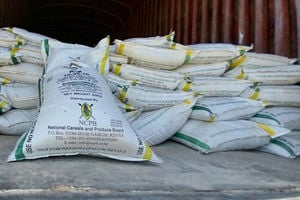Why weaker shilling failed to strengthen export cash

At the time, the USD exchange rate to Kenyan shilling was Sh86.
What you need to know:
- Kenya’s exports underperformed last year as exporters struggled to obtain hard currency to import intermediate goods.
- Data from CBK says earnings fell by 2.2 per cent to Sh987bn in the 10 months to October.
Kenya’s exports last year upset expectations by falling against what was a more than one fifth depreciation of the shilling against major world currencies including the US dollar, Euro and British Pound.
While exports had been widely expected to grow, data from the Central Bank of Kenya, through 10 months to October 2023 shows total good exports fell by 2.1 per cent to Sh978.7 billion ($6.104 billion) in the period.
According to the International Monetary Fund (IMF), Kenya’s exports underperformed last year as exporters struggled to obtain hard currency to import intermediate goods, which are usually processed to make what is sold abroad.
“Exports are projected to have underperformed in 2023 due to forex market dysfunction, for example, through increased transaction costs of securing FX [foreign exchange] for imported intermediate goods,” said the IMF.
Is also cited the extended headache in obtaining hard currencies in the market as the interbank FX market remained dormant while spreads in the bank-client market remained large in most cases.
Secondary data from the CBK shows importation of intermediate goods, excluding oils, which are usually processed into finished goods set for both domestic and foreign markets, fell by 15 per cent through 12 months to October 2023 to Sh1.8 trillion ($11.57 billion) from Sh2.21 trillion ($13.79 billion).
Bumper export earnings are usually projected when local currency’s slide as home produced goods and services become cheaper for trading partners leading to buyers increasing their demand for the cheaper goods.
On the flipside however, imports become more expensive in home currency terms forcing residents to demand less including intermediate goods which make key inputs in the manufacture of exports.
The IMF has, however, previously warned of shifts to the traditional paradigm as more global trade is conducted in just a few currencies.
“There is growing evidence that most of global trade is invoiced in a few currencies, most notably- the US dollar. In fact, the share of US dollar trade invoicing across countries far exceeds their share of trade with the US,” the IMF stated in a July 2020 note.
Despite the deteriorating exports, the current account balance as a percentage of GDP is estimated to have largely held up at 4.1 percent at the end of 2023 with a faster drop in imports offsetting the upset in export earnings.
Total imports through 10 months to October fell by 14.7 percent from Sh2.6 trillion ($16.2 billion) in the comparable 2022 period to Sh2.2 trillion ($13.7 billion).





